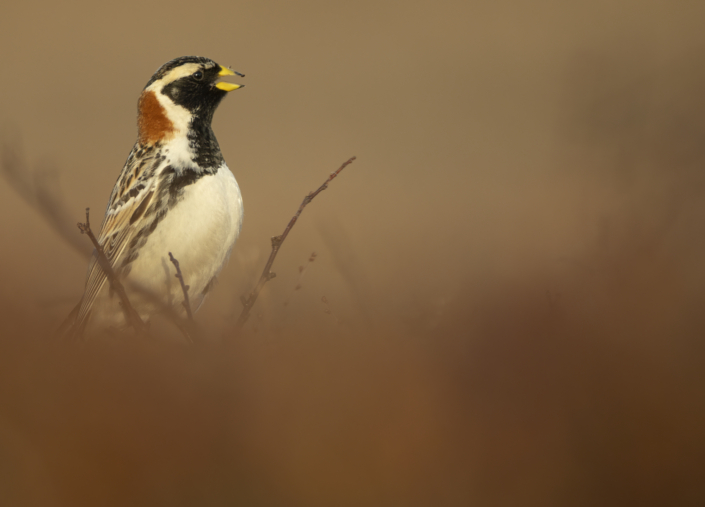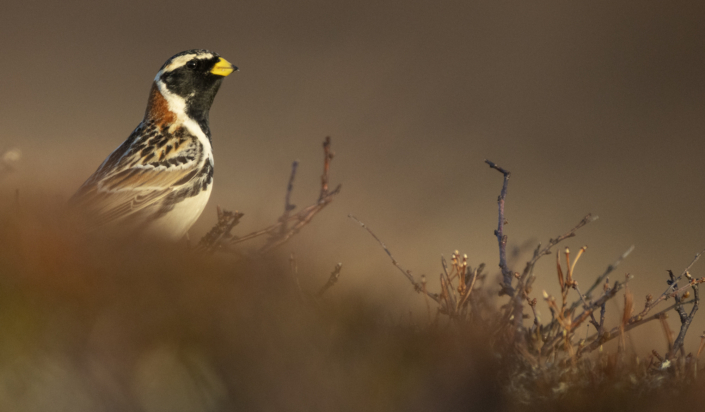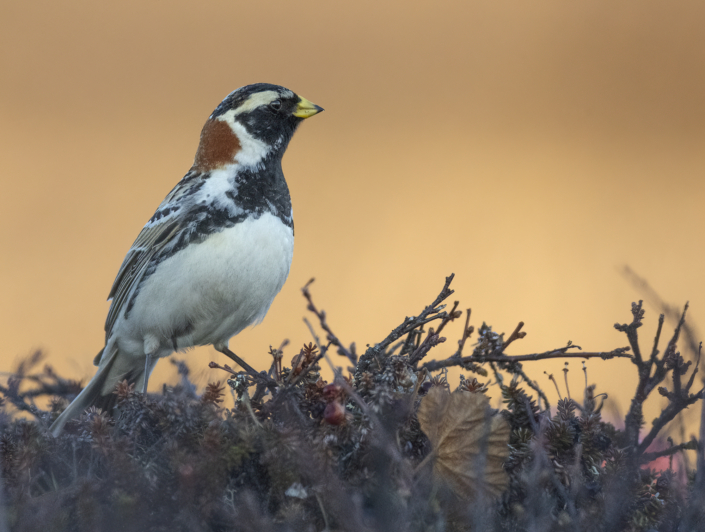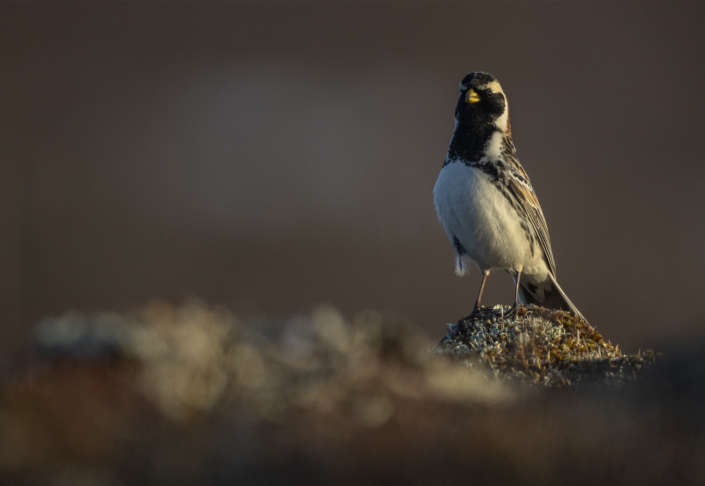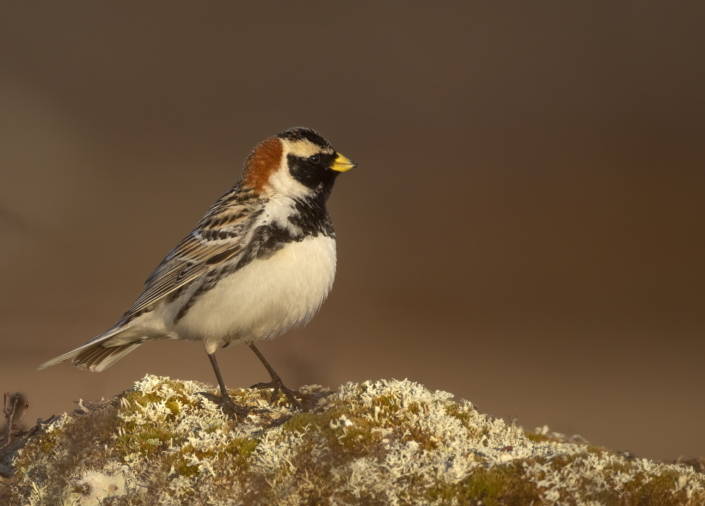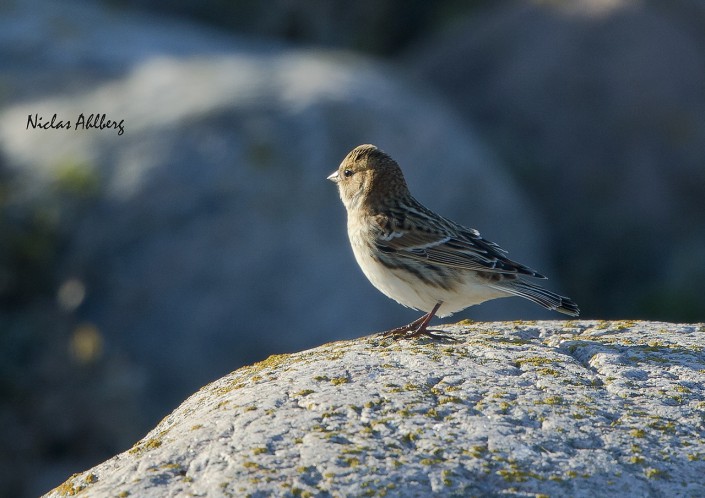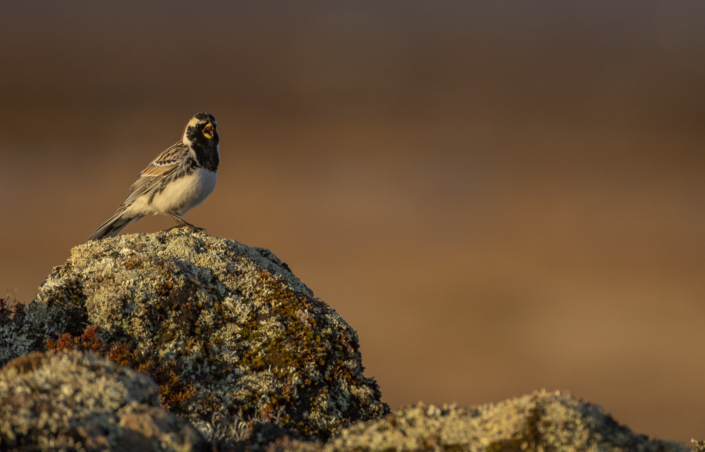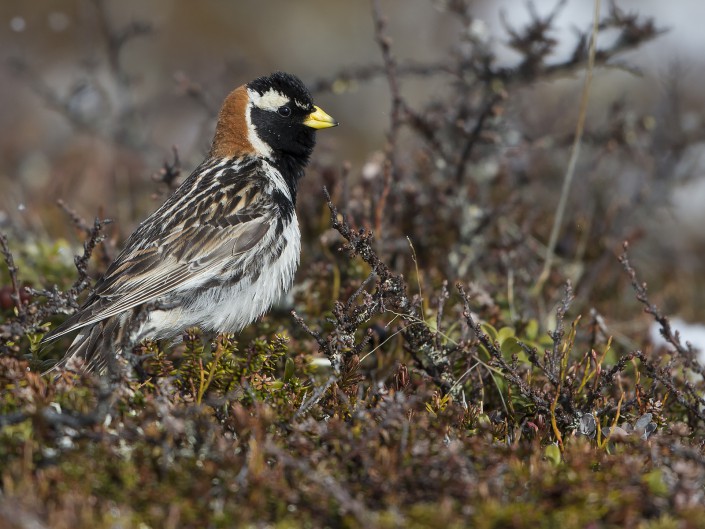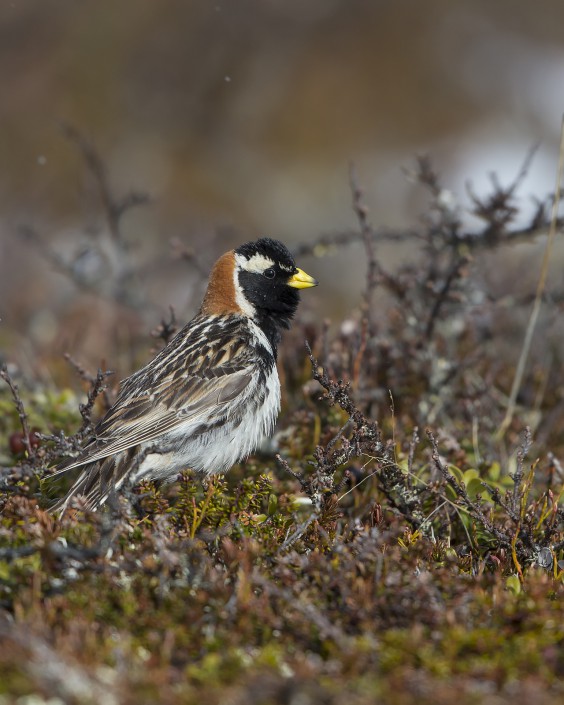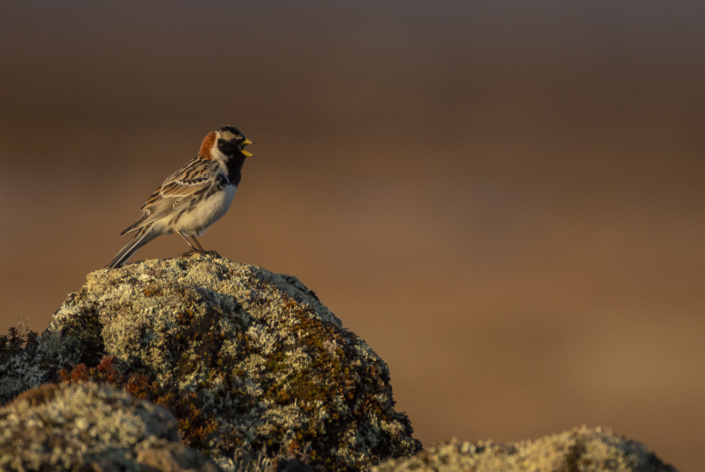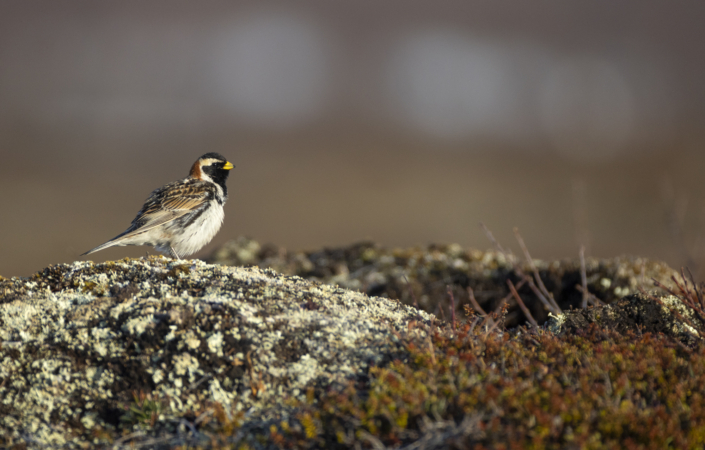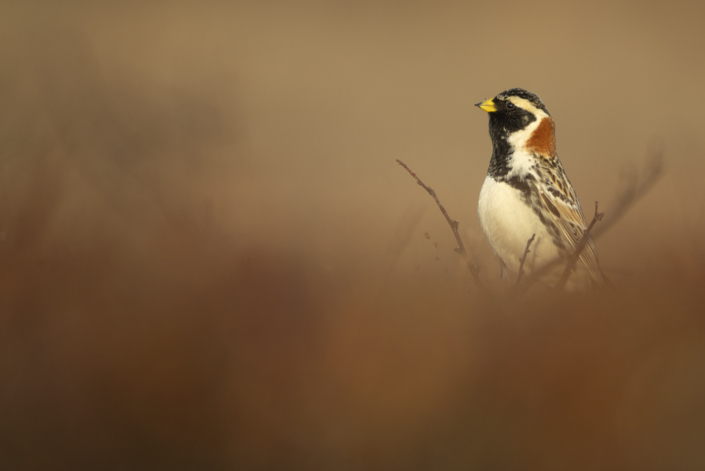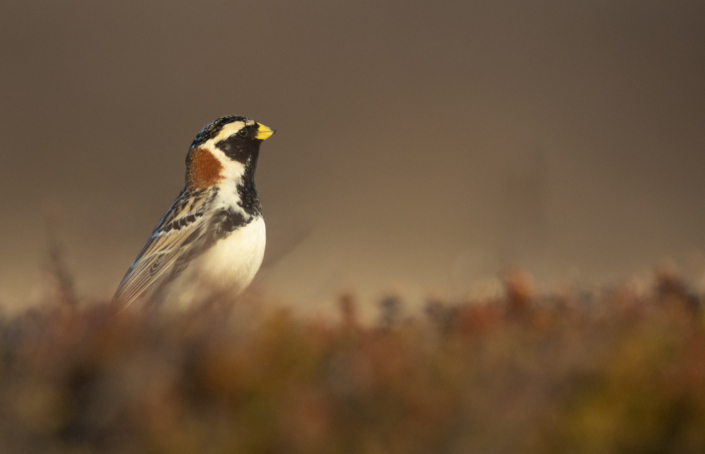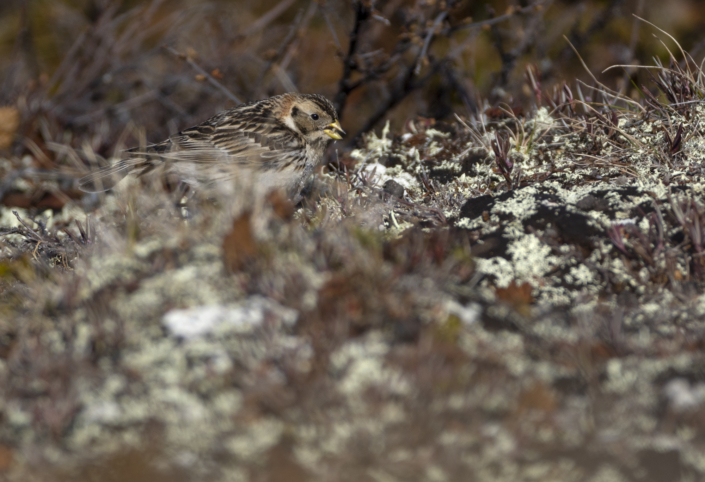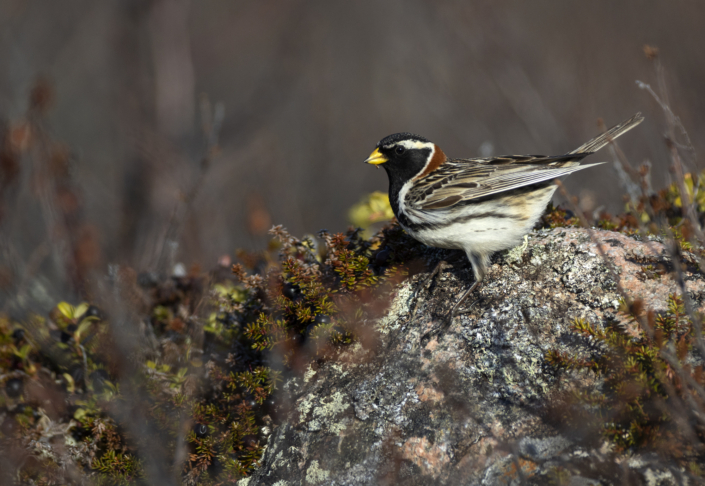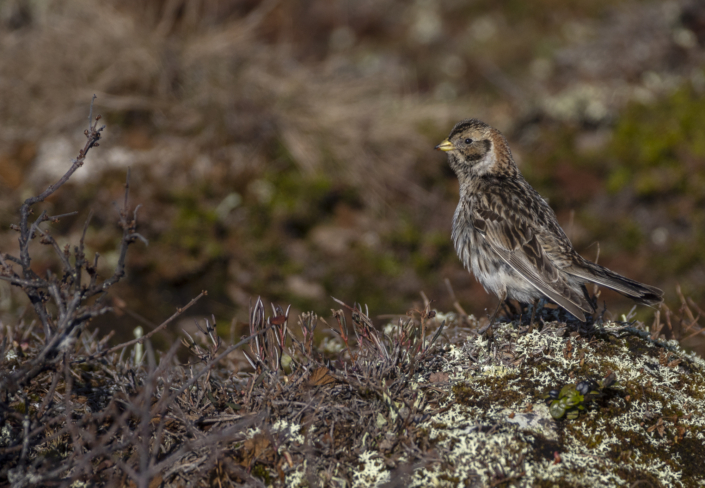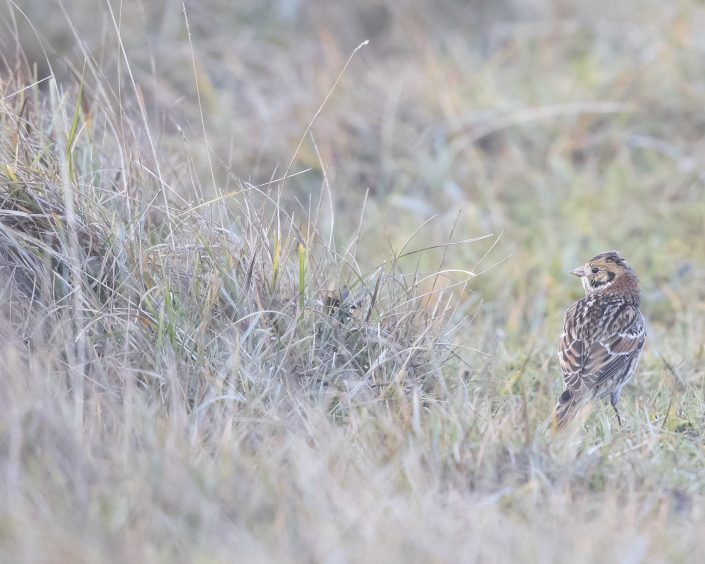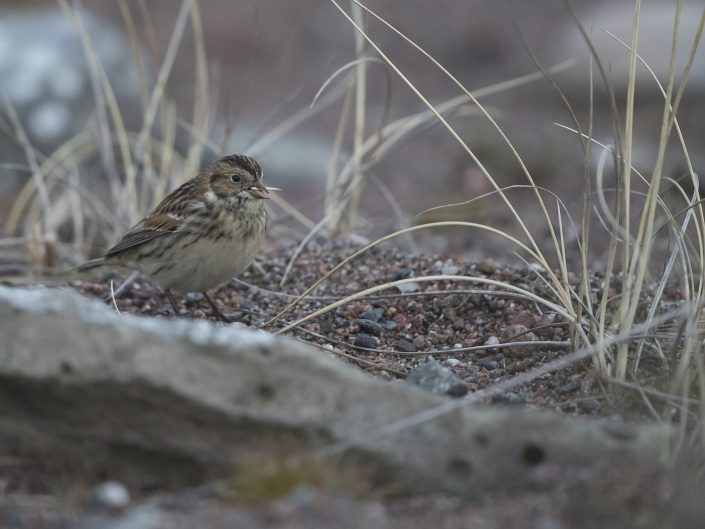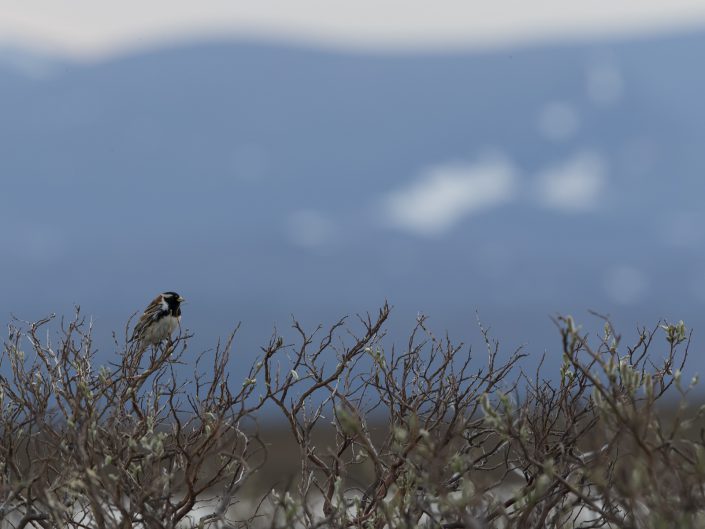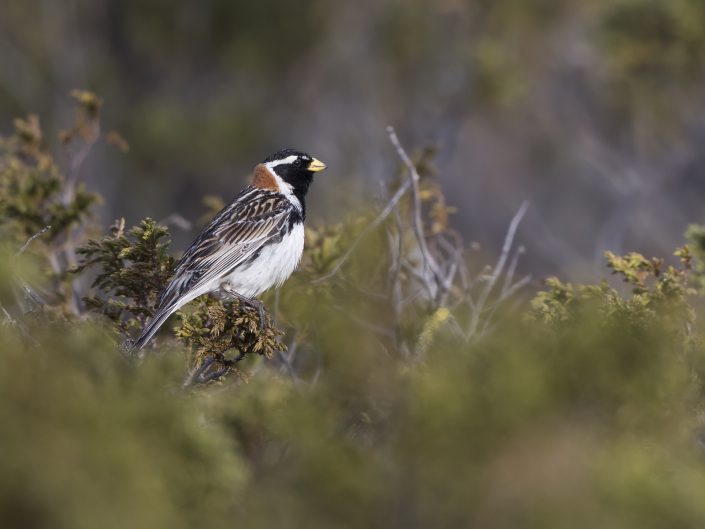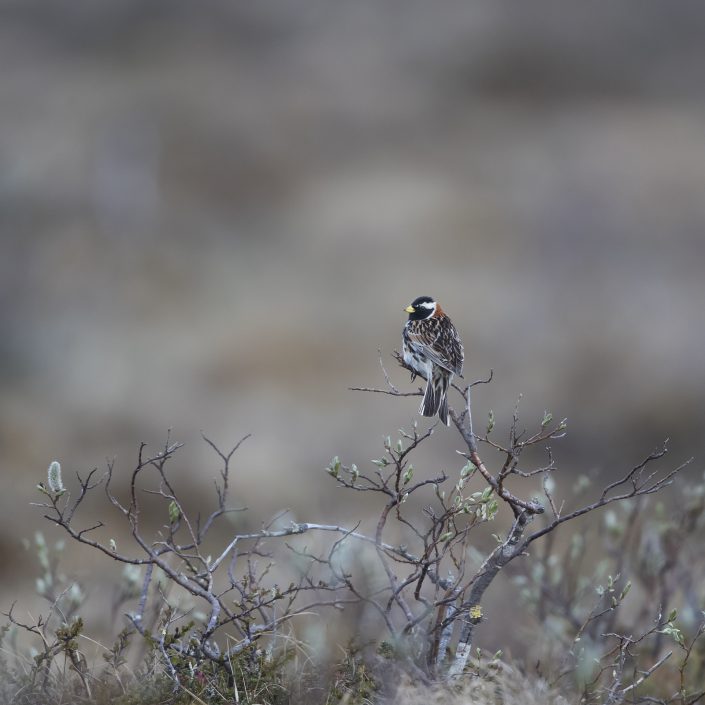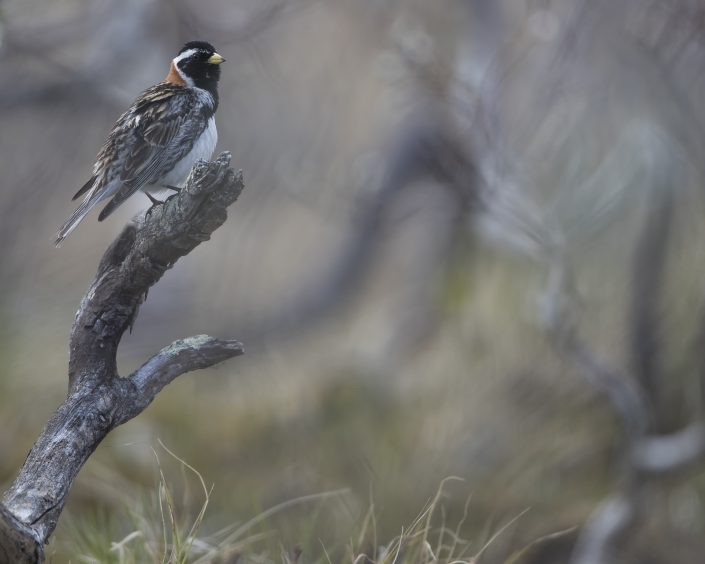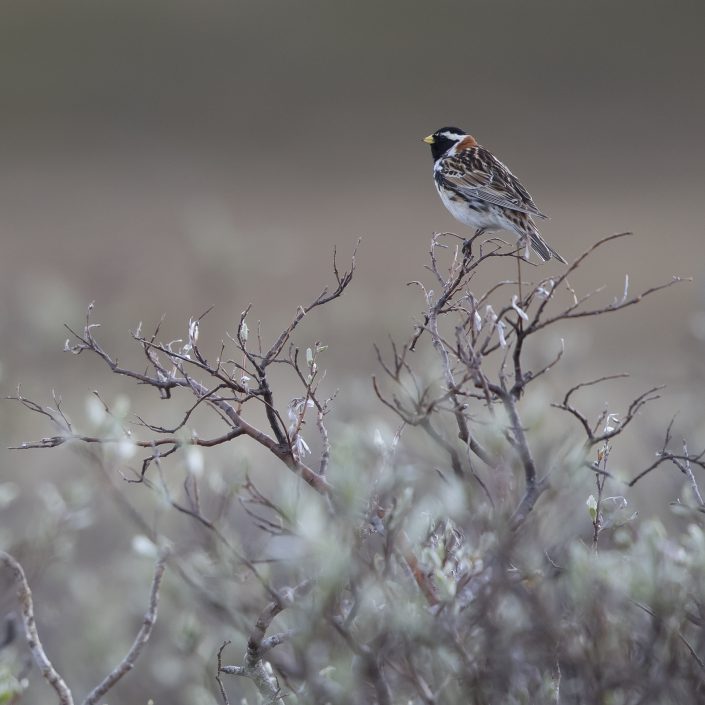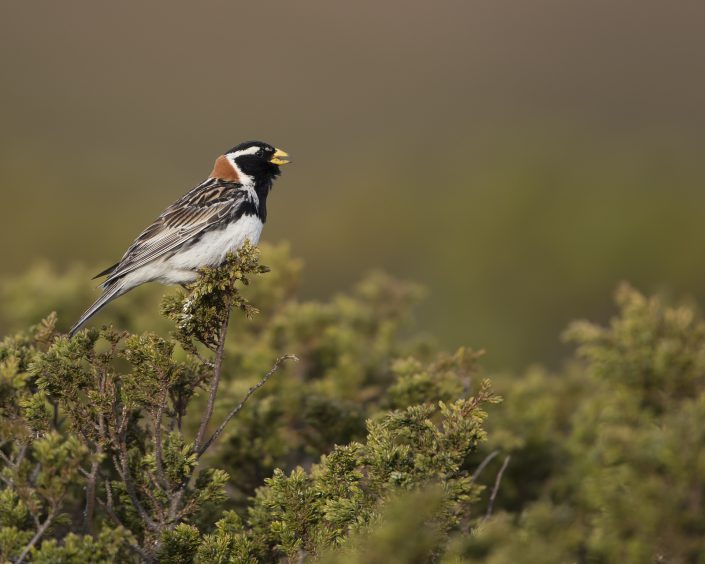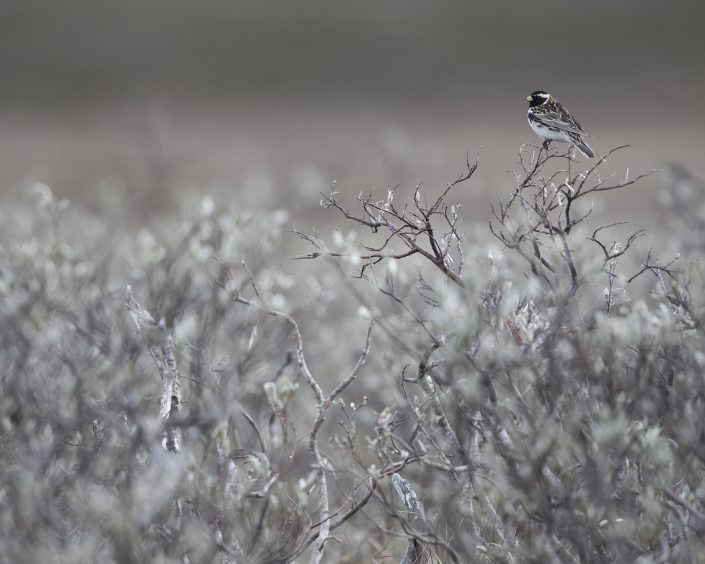This post is also available in: Swedish
Lapland Longspur – Calcarius lapponicus
Lapland Longspur – Calcarius lapponicus
The Lapland longspur is a robust bird, with a thick yellow seed-eater’s bill. The summer male has a black head and throat, white eyestripe, chestnut nape, white underparts, and a heavily streaked black-grey back. Other plumages have a plainer orange-brown head, a browner back and chestnut nape and wing panels.
It breeds across Arctic Europe and Asia and in Canada and the northernmost United States. It is migratory, wintering in the Russian steppes, the southern United States, Northern Scandinavian arctic areas and down to coastal Southern Sweden, Denmark and Great Britain. This is the only Eurasian species of the longspur buntings, and while it probably did not evolve there, it has been present in Eastern Europe for at least about 30,000 years.
It breeds in wet areas with birch or willow, and or bare mountains, and winters on cultivated land or coasts. The bird is often seen close to the tree line, and likes to feed in mixed-species flocks in winter. Its natural food consists of insects when feeding young, and otherwise seeds. The nest is on the ground. 2–4 eggs are laid.
During the winter, the longspur feeds on seeds. They pick them on the ground, rarely feeding directly on plants. They will forage around the same area for a period varying between a few minutes and an hour, then fly away looking for a new foraging area. Their seed diet is composed mainly of seeds from grass, foxtail, cultivated millet, crabgrass and wheat.[5] During the breeding season, the birds migrate to the north, where their diet switches to arthropods. Nestlings are only fed arthropods, which also constitute the diet of the parents at that time of the year (June to July).
It sounds like this when it sings
Recording by Patrik Åberg from Xeno-canto



